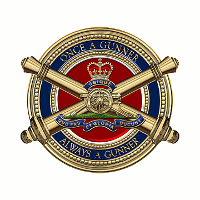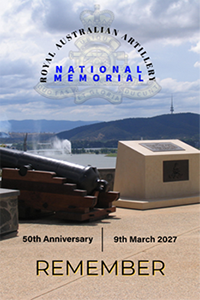|
||||||||||||||||||||||||||||||||||||||||||||||||||||||||||||||||||||||||||||||||||
| Have a Question / Feedback ? | Submit | Search Our Site |
|
| LIEUTENANT RALPH D. DOUGHTY MC | ||||
 |
||||
|
||||
 |
||||
As told through the diaries of a New Zealand artilleryman who had served in the AIF during World War One. After receiving their ‘Full Marching Orders’ to go ashore at Gaba Tepe on the 26 April, 1915 members of the 2nd Battery, 1st Field, Artillery Brigade could not have known what lay ahead for them on such an arid and inhospitable Gallipoli peninsula. But, by reading the diaries of one artilleryman, ‘who had spent nearly eight months on the peninsula’ we can gain an understanding from this account of the campaign as seen through his eyes, with every aspect of military life entered into his diaries. Being towed ashore aboard overloaded punts, young ANZAC troops ‘men that had never before experienced enemy fire’ were greeted by a hail of bullets and artillery fire sent from Turkish troops that were stationed in well fortified trenches and forts. After observing naval fire all that morning, Ralph Doughty was having a quiet snooze when at 1 pm he was woken up by a ‘Majestic’ broadside to receive 'Full Marching Orders' to go ashore. He writes: ‘saw to the slinging of horses and got aboard the punt, and was towed ashore by a mine-sweeper. Within a mile from the shore we became a mark for the enemy's snipers. On getting to the shore, rec. orders to go back as the landing was too crowded. Didn't we curse, but orders are orders on service, so back we went. I'd like to have 5 minutes with that particular officer who handed out that order. The enemies snipers got busy again but only splashed the water around us.’ Ralph’s second attempt to get ashore was more successful. Being told that they were to reinforce the 29th Div at Cape Helles, the battery came ashore on 4 May: ‘Arrived at destination 2.30 pm. Started disembarking ashore at 5 pm. The foreshore is absolutely lined with trenches and graves. Our chaps lost terribly. The bay itself was strongly fortified and barbed wire was placed 80 yds out from the shore under water, so as to entangle the boats.’ Moving inland about 4 miles to advanced trenches, ‘getting shelled all the way,’ the battery began to dig emplacements for the guns to commence firing at night, ‘only to get peppered in return. No casualties but there was a sniper who nearly scored one hit I happen to know about.’ This was Ralph Doughty first experience of being under fire and the beginning of nearly three years of service for the Australian Imperial Force. After his initial training Ralph embarked for overseas service on 18 October 1914 aboard the Transport A8 Argyllshire. Arriving in the ‘Land of the Pharaohs where rigorous training and tons of good fun and High Life generally were the rules of the road’ Ralph was to begin his first diary on 5 April 1915. This diary, a large notepad with leather covers cut from a horse saddle and held together by a copper wire stitched through the spine, contained entries up until 15 September. After leaving Port Alexandria, Ralph headed for the Dardanelles, arriving at Lemnos Island on the 12 April: ‘So here's to it and may our little flutter which we are about to have tend in some way to weight his balance against ‘His most Satanic Majesty THE KAISER.’ Diary one contained entries from numerous battle locations on the peninsula, to be completed in a dugout with Ralph deciding on who was to receive his first diary. This being of course his mother. ‘Rained like blazes last night, but our dug-out proved quite water proof although the mud was particularly sloppy when we got out this morning. Have just rec. orders to expect a move any old time now to go to some new landing, so I suppose things will be extra brisk soon. HURRAH! Have decided to send this to Lottie’ Between the dates 16 Septemberto8 December, Ralph managed to complete two more diaries. Both these being small black and brown pocket note books that also contained entries from in and around the various battle locations on the peninsular like Shrapnel Gully and Lone Pine. Many entries were added when Ralph was sitting on the 18 lb gun seat waiting for orders to open fire: ‘5th October, Arrived at destination (Shrapnel Gully) some unearthly hour this morning. This place doesn't belie its name either. Had a good view of the guns shelling one of our batteries perched away up on a ridge to our left. 29th November, The heaviest bombardment the Turks have given us for months. Sent over 8.2 HE Howitzers. Smashed Lone Pine about. Casualties very heavy on our side. Expecting an attack tonight.’ Ralph continued to place entries from the peninsula up until the general evacuation order was given to return to Egypt. The last entry in diary three was placed on 3 January 1916 back in Tel-el Kebir camp Egypt. ‘Today I had a look at myself in a mirror the first look I've had for some considerable time, just on a month. I got a shock, believe me, and of all the curios I've yet seen, I'll confess I'm the biggest. GOD SPEED THE CROWS AND FORCE THE NARROWS.’
Diary five is also a field service correspondence book with Ralph placing his first entry on 12 August around the areas of the Western Front, namely Vadencourt Wood: ‘16th August 1916, Orders to go into the Firing Line. Left Vadencourt Wood at 8am and accompanied the major to our position. Took over the guns and position of the 12th Bty at 1 pm.’ After his time spent on the Western Front Ralph travelled through into Belgium: ‘2nd September, On the way we came through Ypres. Saw what's left of the Cloth Hall and Cathedral. Both looking very pretty after their sundry bombardments. Ypres is blown to blazes generally. Must have been quite a decent city once upon a time.’ Ralph was to spend one month of artillery duties around various locations on the Belgium sector before being allowed to return to London, England for a well deserved rest on 25 September. ‘Wired Auntie this morning and left London (Euston) by N.W. Express for Manchester. Arrived there at 3.57PM. Went out to MB and gee wizz what a reception I got. The girls were staying down at Blackpool. Honestly it’s worth waiting 2 years for.’ But no sooner had Ralph arrived to enjoy his rest than he was ordered to return to Belgium,retracing the route back across the channel to arrive at Poperinge and directly back into battery duties on 5 October. Ralph continued his battery duties up until 16 March when he was to place his last entries into his set of five diaries, with a very appropriate ending for an artilleryman who had given his all since enlisting back in Sydney in 1914: ‘15th March 1917, Working like a Trojan getting things square. Mud still gloriously soupy and still raining. 16th March 1917, Better day today. Very heavy bombardment on both left, right and centre. Between Ralph’s last entry in diary five until he was wounded in action on 23 July 1917 ‘or nearly 3 months of artillery duties’ no more diaries or information could be found on his artillery service. Information on the wound Lieutenant Ralph. D. Doughty received on 23 July 1917 at Coxyde Bains, Belgium up until his death 3 days later has been sent over to me from Australia by the son of Lt Kingsmill. Extracted from the memoir of Lt Ken. S. Kingsmill. 7 August 1917, Rode into Bray Dunes again on 7 August, then on to Coxyde Military Cemetery where I planted a small wooden cross on Lieutenant Doughty’s grave and got back to wagon lines at 10.45 p.m. All of Ralphs diaries made it back to New Zealand intact from ‘bloody conflicts’ through numerous campaigns and have now been carefully transcribed into a readable format with care and respect by many individual people. This had to be done before the entries were lost forever, being that it has been over 94 years since Ralph last placed pencil to paper in diary one. Ralph Doughty, my great, great uncle, will forever be remembered by my family and his diaries are being looked after with care by myself. Now after 95 years ‘on the 7 August 2012’, Donald Kingsmill (the son of Lt Ken Kingsmill) returned to Coxyde Military Cemetery, Belgium, where he too placed a small wooden cross and poppy on Lieutenant Doughty’s grave with the inscription: |
||||
ADMIRED BY HIS FELLOW OFFICERS AND REMEMBERED WITH HONOUR BY THE KINGSMILL FAMILY IN AUSTRALIA |
||||
 |
||||
| To view the entire story of Lieutenant Ralph D. Doughty MC including all 5 diaries along with photographs visit our Notable Gunners section. | ||||
Everywhere Whither Right and Glory Lead |
||||



